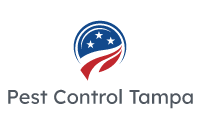Welcome to my blog about Pest Control Tampa! In this article, we will explore a fascinating question: how long can a fly live without its head? Join me as we uncover the extraordinary resilience and survival mechanisms of these tiny creatures. Let’s dive in!
The Curious Case of Flies: How Long Can They Survive Without a Head?
The Curious Case of Flies: How Long Can They Survive Without a Head?
When it comes to pest control in Tampa, flies are a common annoyance. These pesky insects seem to appear out of nowhere and can be quite difficult to get rid of. But have you ever wondered how long flies can survive without a head?
It may come as a surprise, but flies can actually live for a short period of time without their heads. This is due to their unique anatomy and biology. Flies have a decentralized nervous system, which means that they don’t rely on a central brain like humans do. Instead, their nervous system is spread throughout their body.
So, even after decapitation, the body of a fly can still exhibit reflexive movements for a brief period of time. This is because some basic functions, such as leg movement and wing flapping, are controlled by ganglia, or small clusters of nerves, located in the thorax (the middle part of the body).
However, a fly without a head will eventually die due to several factors. Firstly, the absence of a head means that the fly cannot eat or drink, leading to dehydration and starvation. Additionally, without a head, the fly cannot clean itself, which can result in infection or disease.
Furthermore, the lack of a head also means that the fly cannot see or navigate properly. Flies rely on their compound eyes and antennae to detect and respond to their environment. Without these sensory organs, a fly without a head would be disoriented and unable to find food or shelter.
In conclusion, while flies can technically survive for a short period of time without a head, their chances of long-term survival are minimal. Pest control in Tampa should focus on preventing fly infestations and implementing effective measures to eliminate them promptly.
Frequent questions
How important is it to control fly populations in Pest Control Tampa and how can it be achieved effectively?
Controlling fly populations in Pest Control Tampa is crucial for several reasons. Flies are not only a nuisance but also carriers of various diseases, including salmonella and E. coli. Therefore, effective fly control measures are essential to protect public health and maintain a hygienic environment.
There are several ways to achieve effective fly control:
1. Sanitation: Keeping the area clean is crucial in controlling fly populations. Regularly remove garbage, food waste, and animal feces from the premises and ensure proper disposal. Clean and disinfect areas where flies are commonly found, such as kitchens, garbage bins, and outdoor dining spaces.
2. Exclusion: Seal any potential entry points for flies, including cracks in windows, doors, and walls. Installing screens on windows and doors can help prevent flies from entering indoor spaces. Properly maintaining and repairing any damaged screens is also important.
3. Elimination: Use fly traps and baits strategically placed in areas with high fly activity. There are various types of fly traps available on the market, including adhesive traps, electric traps, and UV light traps. Additionally, insecticides approved for fly control can be used, either as sprays or in the form of bait stations.
4. Professional pest control services: Hiring a professional pest control company specializing in fly control can provide effective and long-term solutions. These experts have the knowledge, experience, and access to specialized products and techniques that are more efficient in controlling fly populations.
In conclusion, controlling fly populations in Pest Control Tampa is essential to ensure public health and hygiene. Implementing proper sanitation practices, excluding flies from entering premises, using traps and baits, and seeking professional pest control services are effective approaches to achieve this goal.
Can a fly survive without its head in the warm and humid climate of Tampa, Florida?
No, a fly cannot survive without its head in any climate, including the warm and humid climate of Tampa, Florida. The head is essential for a fly’s survival as it houses important sensory organs, such as the compound eyes and antennae, which are crucial for navigation, finding food, and detecting threats. Additionally, the head contains the fly’s mouthparts, which it uses to feed. Without a head, a fly would not be able to see, navigate, or eat, and therefore would not be able to survive for long.
How does decapitating flies impact the overall fly control efforts in Pest Control Tampa?
Decapitating flies does not have a significant impact on overall fly control efforts in Pest Control Tampa. While it may temporarily reduce the population of flies in a specific area, it does not address the root cause of the infestation or prevent new flies from entering the space. Fly control in Pest Control Tampa typically involves identifying and eliminating the breeding grounds, implementing exclusion methods to prevent entry, and using targeted insecticides or traps to effectively manage and reduce the fly population. Killing individual flies by decapitation is not a sustainable or effective method for long-term fly control.
In conclusion, the lifespan of a fly without its head is surprisingly short. Contrary to popular belief, a decapitated fly can only survive for a few minutes or hours at most. This is due to their decentralized nervous system that allows for basic reflexes to occur even without brain control. However, essential functions such as feeding and grooming are impossible without a head, leading to the fly’s inevitable demise. Understanding the anatomy and behavior of pests like flies is crucial in developing effective Pest Control Tampa strategies to minimize their presence and potential risks they pose. By addressing infestations promptly and implementing proper prevention measures, we can ensure a cleaner, healthier environment for ourselves and our community.
